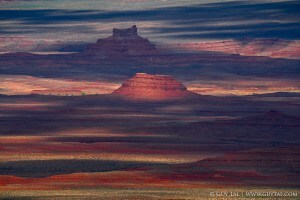On Aesthetic Experiences
Note: My upcoming book, Be Extraordinary, is now available to pre-order!
Our ability to perceive quality in nature begins, as in art, with the pretty. It expands through successive stages of the beautiful to values as yet uncaptured by language.
—Aldo Leopold
Art and nature have this in common: they affect some people more profoundly than others. Upon encountering the same objects or events, some people may experience such elevated states as awe, reverence, flow, creative inspiration. Other people in the same circumstances, if they are not entirely oblivious to them, may respond to such encounters with little more than momentary reflexive acknowledgment, perhaps taking a snapshot by a Pavlovian possessive instinct, before moving on to other preoccupations, never experiencing more powerful, memorable, and transformative emotions. This commonality between experiences of art and experiences of nature is not surprising. Our intuitive perceptions of artistic objects and natural phenomena can both be considered aesthetic experiences.
Some thinkers considered aesthetic experience strictly as emotions inspired by beauty, but the diversity of opinions on this matter among philosophers and scholars suggests a broader definition: an aesthetic experience is the sum of emotions arising from sensory perceptions upon encountering something significant in the world—something beyond the ordinary. Such perceptions, in turn, may arise either from physical stimulation of our sensory organs or from mental (imagined) representations of such sensations.
Why are some people more responsive to aesthetic experiences than others? What makes the difference? Attitude does—more precisely, a predisposition to considering artworks and feats of nature as triggers and catalysts for intense emotional engagement, rather than as mere objects or events—as artifacts, anecdotes, chance occurrences. People predisposed to aesthetic experiences consider artworks and natural phenomena as things to be felt, not just recognized; assimilated, not just witnessed; actively contemplated, not just passively recognized; delineated from the stream of life, not contiguous with other—mundane, ordinary, tedious—things and events.
Those who reap the greatest inner rewards from art and nature—rewards such as awe, flow, reverence, inspiration, joy, creative energy—are those who intuitively savor—actively, consciously, deliberately—their encounters with art and natural phenomena, rather than as mere recognition (or even appreciation) of objects to be acknowledged passively among other distractions.
While these rewards are available to all, accomplishing them demands different degrees of effort from different people. Some are fortunate to have evolved a reverent attitude toward art and nature early in life. As adults, their minds are already trained to respond to aesthetic experiences naturally and intuitively. Others, who may have grown up without explicit prompting to, instruction in, or opportunities for reverent savoring of aesthetic experiences, still may—if they wish—train themselves by deliberate study and repeated exercise to become open and receptive to these experiences: to evolve consciously a natural instinct to stop, become conscious of and captivated by uncommon aesthetic phenomena as they presents themselves, direct attention and cognitive resources to experiencing them in all their richness and nuance without distraction, think about them, relate them to knowledge, memories, and emotions.
Alas, the distraction-rich world we live in makes such conscious practice more difficult today than it used to be, requiring greater discipline and discomfort to train one’s mind to a point where prolonged, reverent responses to art and nature arise intuitively and effortlessly. Still, it is not impossible, and has the potential to elevate and enrich life in profoundly enjoyable and meaningful ways.
I speak from experience. Art did not play a big role in my early life. But nature did. Only as an adult, I came recognize that nature and art could both give rise to profound aesthetic experiences—some overlapping, some unique to each. When I discovered that I may experience similar emotions and states of mind by beholding and contemplating artworks, music, and great writing—even if abstract and stylized as to be wholly separate from things in reality—as I did when encountering impressive, fascinating, inspiring feats of nature, my love of art took on the characteristics of my love of nature: it became an obsessive pursuit to learn more, to experience more, to understand more, to discover more, to feel more strongly about, to immerse myself in—repeatedly, and in disconnect from other aspects of life.
Regrettably, some go about seeking the inner rewards of art and nature in the wrong way. Rather than work on shaping their own attitudes and capacities for prolonged emotional, contemplative, engagement with aesthetic experiences—by constant learning and repeated exercise—they instead believe wrongly that they can shortcut their way to such states if they mimic the works and words of others. Arthur Schopenhauer described the folly of such thinking. He wrote:
The world in which a man lives shapes itself chiefly by the way in which he looks at it, and so it proves different to different men; to one it is barren, dull, and superficial; to another rich, interesting, and full of meaning. On hearing of the interesting events which have happened in the course of a man’s experience, many people will wish that similar things had happened in their lives too, completely forgetting that they should be envious rather of the mental aptitude which lent those events the significance they possess when he describes them; to a man of genius they were interesting adventures; but to the dull perceptions of an ordinary individual they would have been stale, everyday occurrences.
To my fellow naturalists, artists, photographers, writers, I recommend taking this as one of the greatest bits of advice I have to offer: don’t envy other people’s things, travels, products, or successes. Instead, seek people whose work and experiences seem to you most authentic and elevated, and envy their attitude, not their productions. Strive to feel like they do, to engage with the world as they do, to shape your own mind to yield you the same inner rewards as they experience, whatever your circumstances, medium, style, or product may be.




